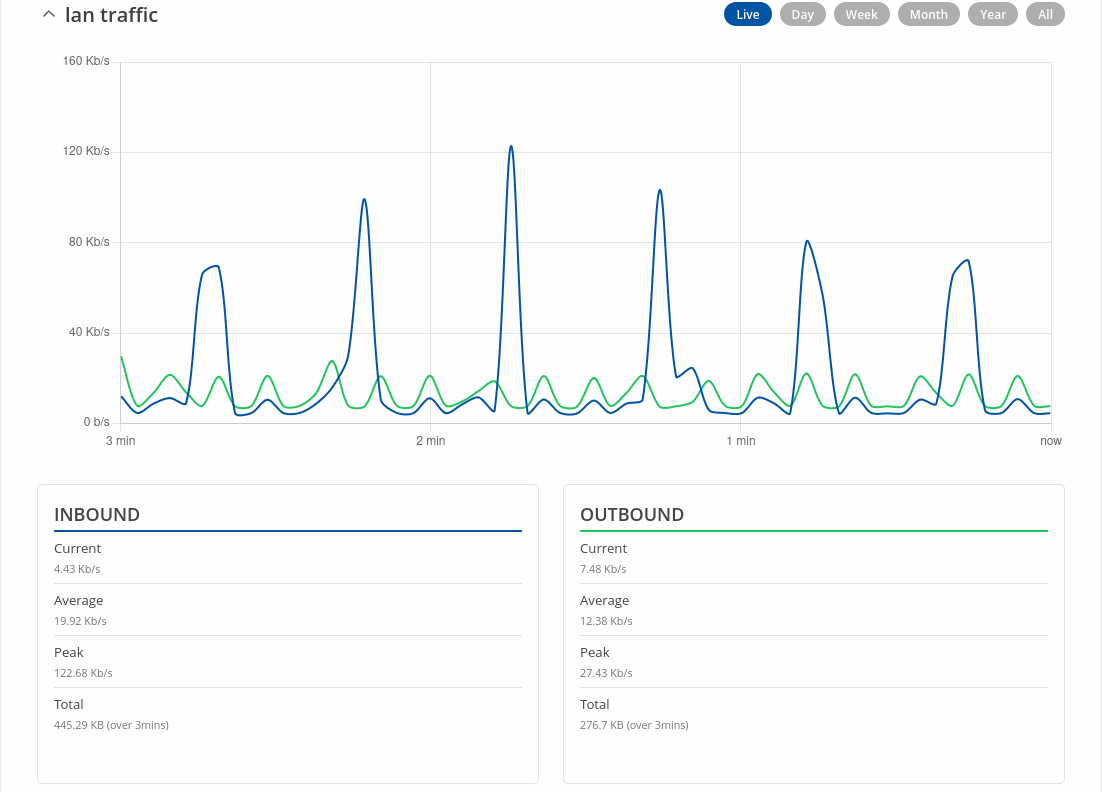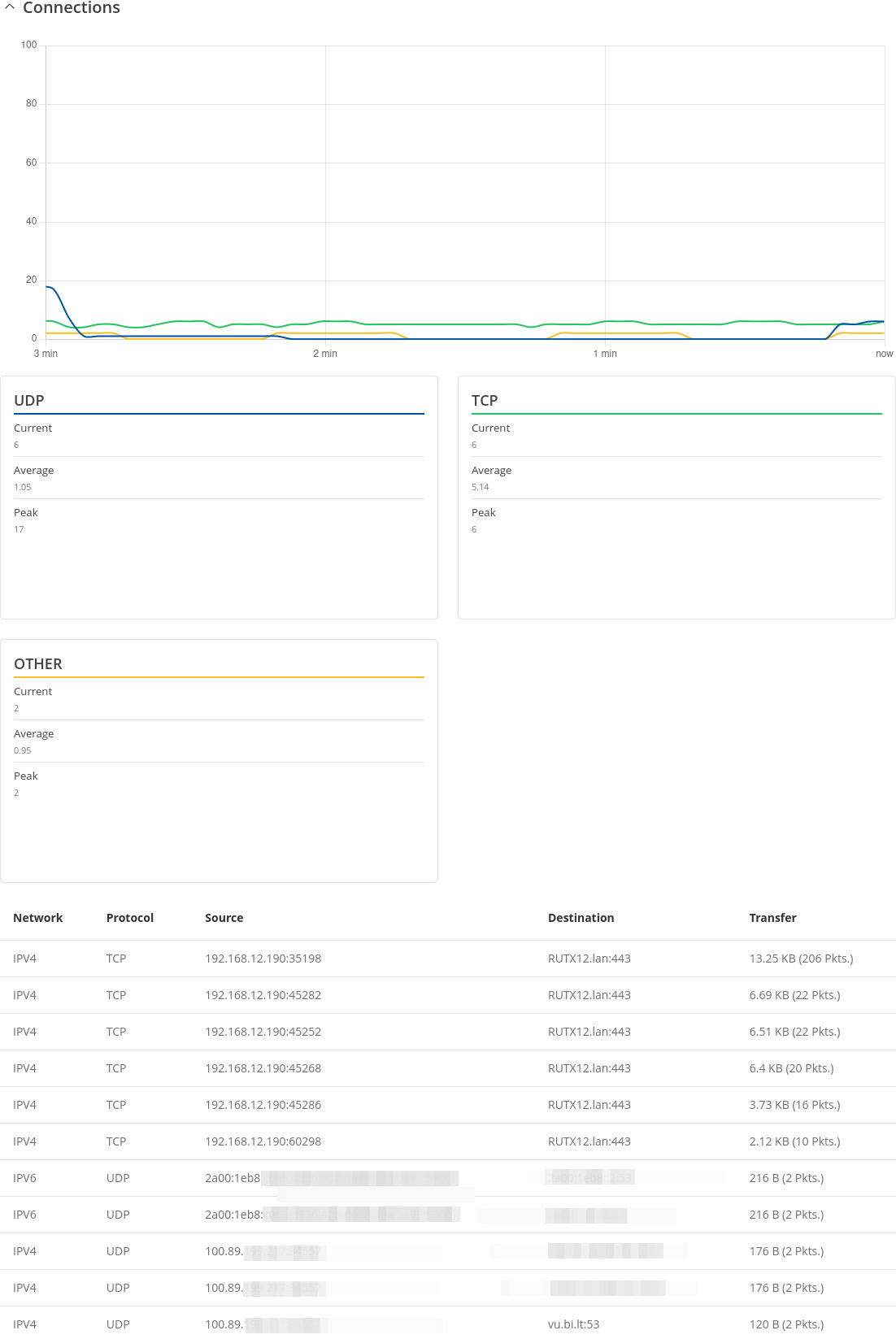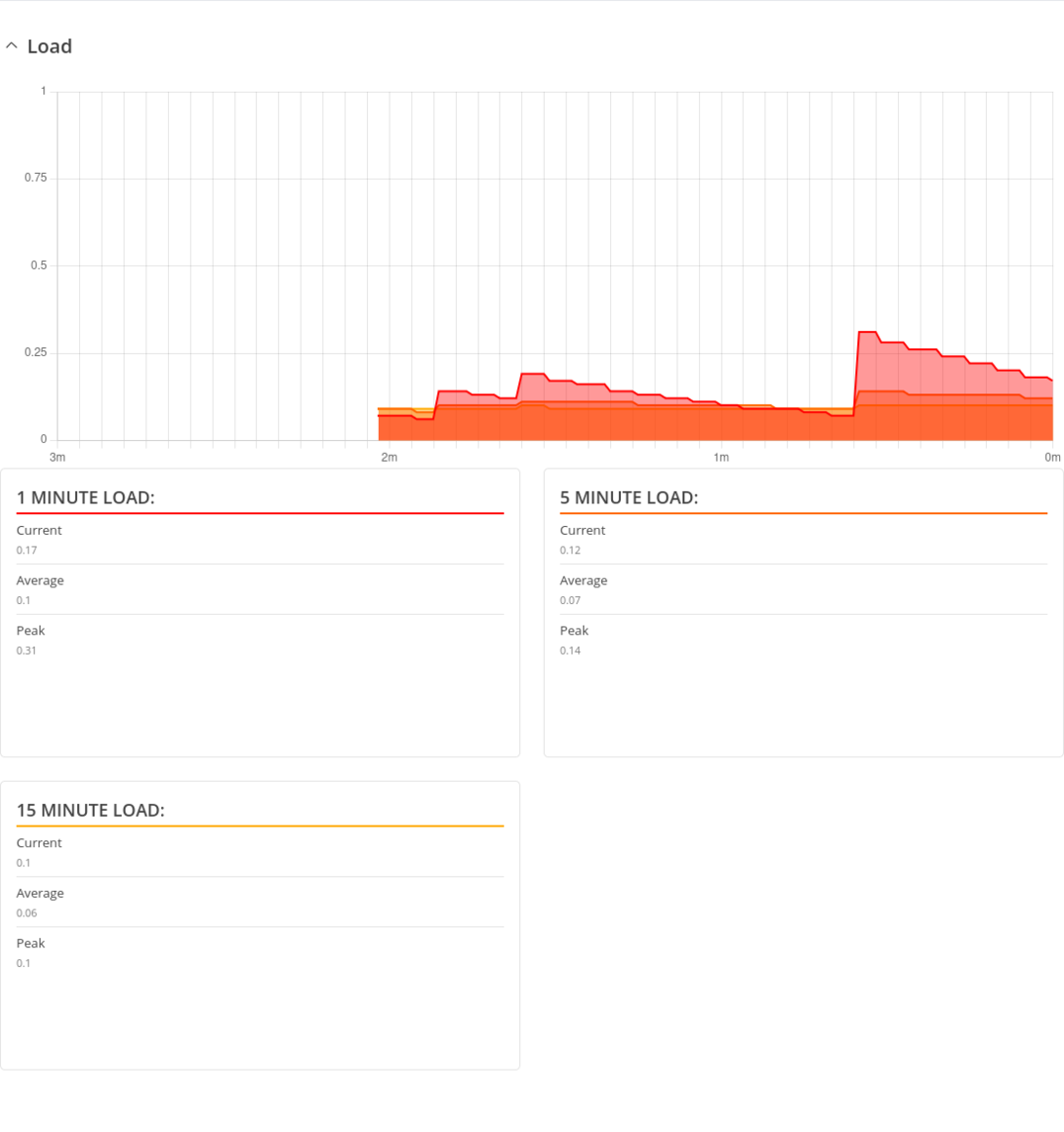Template:Networking rutos manual realtime data: Difference between revisions
No edit summary |
No edit summary |
||
| Line 24: | Line 24: | ||
The figure below is an example of the Realtime Load graph: | The figure below is an example of the Realtime Load graph: | ||
[[File: | [[File:Networking_rutx_manual_realtime_graphs_load_v3.png|border|class=tlt-border | 1102x1145px]] | ||
{{#ifeq:{{{series}}}|TRB5|| | {{#ifeq:{{{series}}}|TRB5|| | ||
==Traffic== | ==Traffic== | ||
| Line 59: | Line 59: | ||
<td>Displays traffic that passes through the wifi connection in graph form</td> | <td>Displays traffic that passes through the wifi connection in graph form</td> | ||
</tr>|}} | </tr>|}} | ||
</table> | </table>}} | ||
{{#ifeq: {{{wifi}}} | 1 | | {{#ifeq: {{{wifi}}} | 1 | | ||
| Line 90: | Line 90: | ||
The figure below is an example of the <b>Day</b> data usage graph: | The figure below is an example of the <b>Day</b> data usage graph: | ||
[[File:Networking_rutos_manual_realtime_data_mobile_usage.png|border|class=tlt-border]] | |||
Mobile data usage graphs for other periods of time are essentially identical, with the exception that | Mobile data usage graphs for other periods of time are essentially identical, with the exception that | ||
| Line 112: | Line 108: | ||
The figures below are examples of both of the Realtime Connections graph and the corresponding table: | The figures below are examples of both of the Realtime Connections graph and the corresponding table: | ||
[[File: | [[File:Networking_rutx_manual_realtime_graphs_connections_graph_v3.png|border|class=tlt-border]]}} | ||
[[Category:{{{name}}} Status section]] | [[Category:{{{name}}} Status section]] | ||
Revision as of 14:03, 26 August 2024
The information in this page is updated in accordance with firmware version .
Summary
The Realtime Data page contains various graphs that display various statistical data changes in real time.
This chapter of the user manual provides an overview of the Realtime Data page for {{{name}}} devices.
Load
The Realtime Load section displays a tri-graph that illustrates average CPU load values in real time. The graph consists out of three color coded graphs, each one corresponding to the average CPU load over 1 (red), 5 (orange) and 15 (yellow) most recent minutes.
The figure below is an example of the Realtime Load graph:
Traffic
The Realtime Traffic graphs provide users with the possibility to monitor average inbound and outbound traffic over the course of Live data, Day data, Week data, Month data, Year data, All data. Each new measurement is taken every 3 seconds for Live data. The graphs consist out of two color coded graphs: the green graph shows the outbound traffic, the blue graph shows the inbound traffic. Although not graphed, the page also displays peak loads and averages of inbound and outbound traffic.
The figure below is an example of the Realtime traffic graph for the LAN connection:

| Graph | Description |
|---|---|
| LAN | Displays traffic that passes through the LAN network interface(s) in graph form |
Connections
The Realtime Connections graph displays currently active network connections with the information about network, protocol, source, destination addresses and transfer speed. The table below the graph displays basic information on active connections.
The figures below are examples of both of the Realtime Connections graph and the corresponding table:

[[Category:{{{name}}} Status section]]

